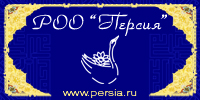For all, who are interested in the Orient
«Восточная коллекция» № 2/2015
 |
- «Nepal as it used to be before 25 April 2015», a photo essay by Margarita Albedil opens the second issue of 2015.
- Svetlana Ryzhakova. The Dancers and the Patrons. In the Indian state of West Bengal there is a tradition of female solo performances at fairs. This scenic action, most often representing love story of Radha and Krishna, is targeted to the most unpretentious audience. The nachni dancer is always accompanied by a man — a musician and a patron.
- Konstantin Panchenko. The Rhodopes. In Bulgaria, in the Eastern part of the Rhodope mountains, there are settlements densely populated by Pomaks — the Bulgarian speaking Muslims. The history of Islamization of the Balkans and the present day of the Bulgarian province is the topic of the essay of the author who visited these places.
- Yuriy Aver’yanov. Forty days and forty nights of Ottoman celebrations. Forty days and forty nights — this is the usual duration of the Royal feasts that end a story in the Turkish tales and legends. On the example of the three most vivid celebrations, which have received enthusiastic responses of the poets, chroniclers and artists, the author recreates the picture of the festivities of 1582, 1675 and 1720s.
- Tatiana Solov’yeva. From Bedouin tent to Royal Palace. In 502, the Byzantine Empire signed an Alliance Treaty with the leader of a militant Bedouin tribe regarding border protection. Then there was the conversion of the tribe to Christianity. Through bribery, diplomacy and related unions the Ghassanids reliably protected frontiers.
- Vasiliy Tserenov. Why they burn carts in the Kalmyk chess. Chess was a widely popular pastime amongst the Kalmyks. The names of the pieces in the Kalmyk chess reflect the realities of nomadic life, the rules also have some peculiarities, despite this fans still play them.
- Irina Vinokurova. The blessed fruit of the Holy Land. Experts have estimated that in the Old Testament the word «wine» is mentioned 140 times, and the word «grapes» in the Old and New Testaments — 160 times. Wine had always been present in religious ceremonies, culture and daily life of Jews. Nowadays, the wine industry in Israel is experiencing a rebirth.
- Anas Kamalov. The Shelter of the Ardebil Elder. The architectural silhouette of the historical centre of Ardebil, located in the North West of Iran, is determined by the mausoleum of Sheikh Safi ad Din. The author of the article tells how this complex was constructed and why they worship the founder of the Sufi brotherhood the Safaviyya.
- Olga Khizhnyak. Buddhism on the Lake Baikal and the Neva River Shores. The exhibition «Buddhism on the Lake Baikal and the Neva River Shores» in the State Museum of the History of Religion (St. Petersburg) made it possible to see fine and handwritten documents, religious objects, sculptures, musical
instruments, masks. A virtual tour of the exhibition suggested by the author represents the main stages of the history of Buddhism in Russia.
- Mariam Emmami. Circumcision — a religious duty or tradition? This ritual came from ancient times. Today, according to some estimates, every fifth boy in the world is exposed to circumcision. In the twentieth century, the world learned about female circumcision, as practiced now in Europe. This article tells about various aspects of this rite.
- Andrey Strelkov. The Mystery of the Lord of the Dead. The ritual side of Tibetan Buddhism is distinguished by its colorfulness and contains an aura of mystery. Christmas mystery of zahm — one of the rituals that show the hidden meanings of the Buddhist Studies and the most ancient layers of Tibetan culture.
- Margarita Albedil. On the banks of the sacred Bagmati. The vast temple complex of Pashupatinath lies on both sides of the Bagmati river, which the Nepalese revere as sacred and believe in the cleansing power of its waters, despite the fact that the river is poisoned by emissions of sewage, garbage and the cremated remains of human corpses on the shore. Temple celebrations attract many pilgrims.
- «Deadly beauty» is the title of the exhibition of Chinese and Indian weapons, being held in April — May 2015 at the State Museum of Oriental Art. Two articles are dedicated to this topic.
- Alexey Pastukhov. «As a strong gust of wind...». Manchu soldiers gained military skills during daily life and then constantly improved them. Much attention during the rule of China’s Manchu Qing dynasty was given to weapons, which is proved by the presented at the exhibition samples.
- Evgeniya Karlova, Andrey Popov. The weapons of the Indian warrior. In India, the possession of arms was erected in the cult. From a religious point of view it was preferable for an Indian warrior to throw a weapon — it did participation in the murder indirect. This explains the wide spread of bows, spears, and other projectile weapons, the examples of which could be seen at the exhibition.
- Viktor Pogadaev. In Yogyakarta, at the anniversary of Kartika. The author tells about the famous Indonesian artist Kartika Affandi and the ceremonies held during the celebration of her Eightieth Anniversary.







